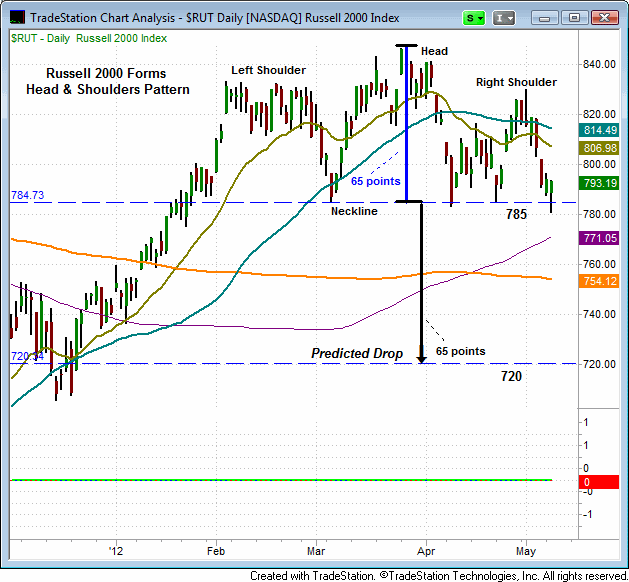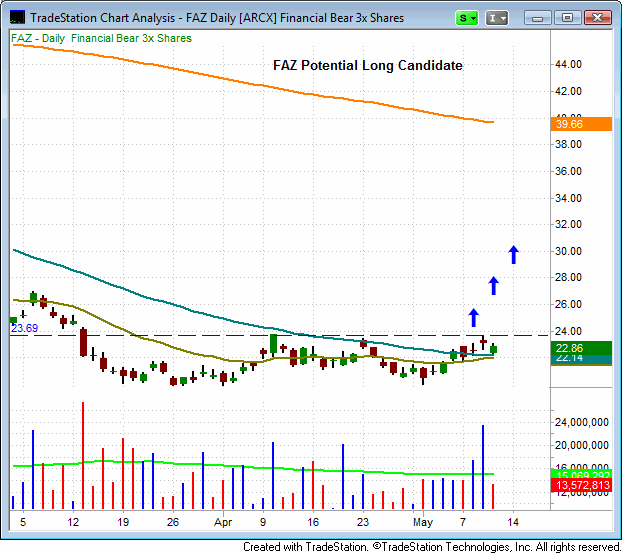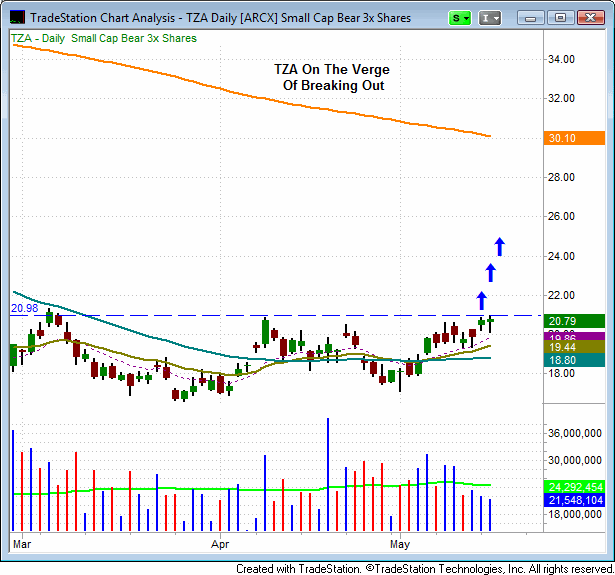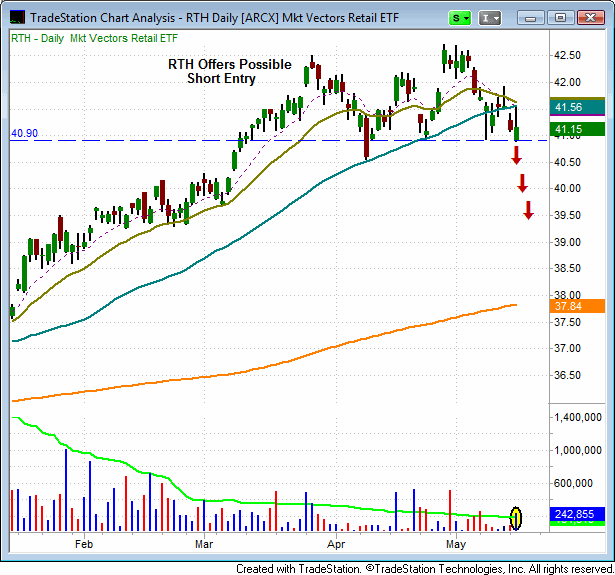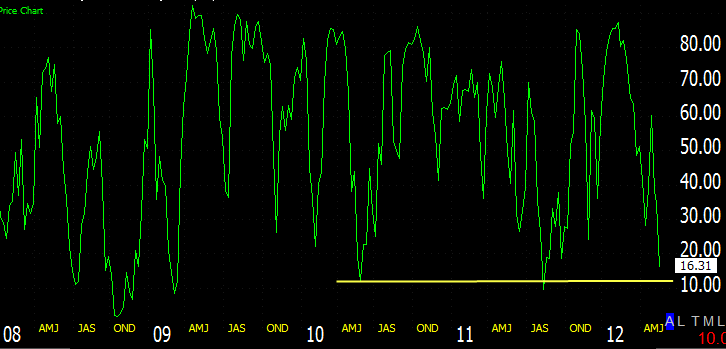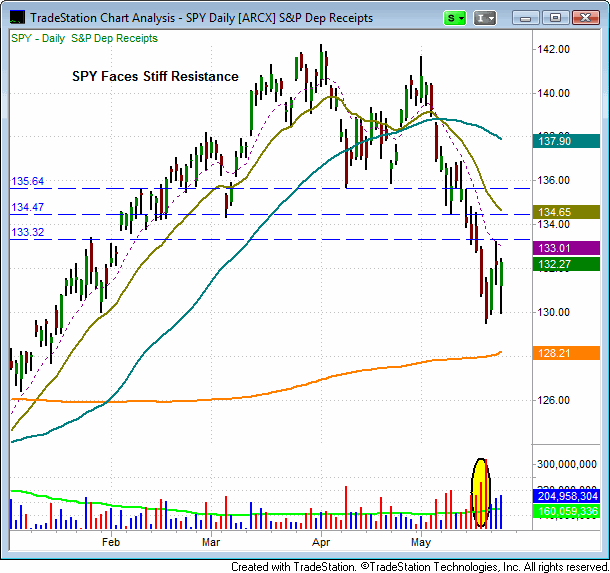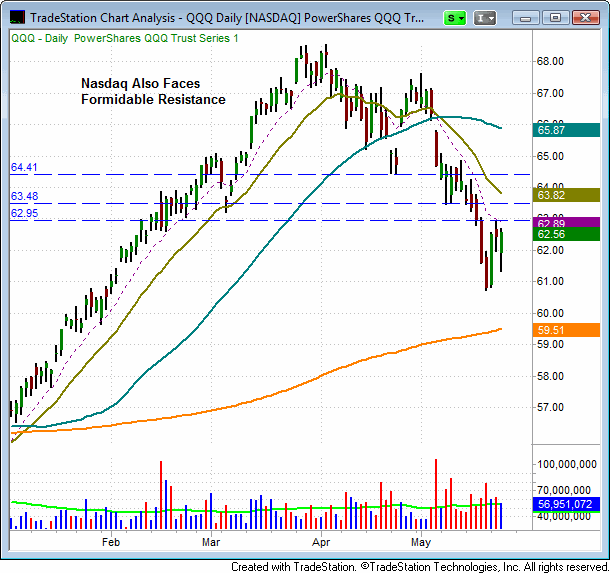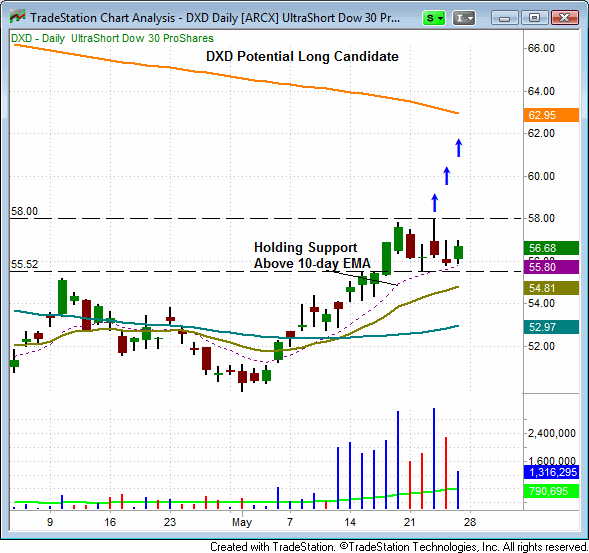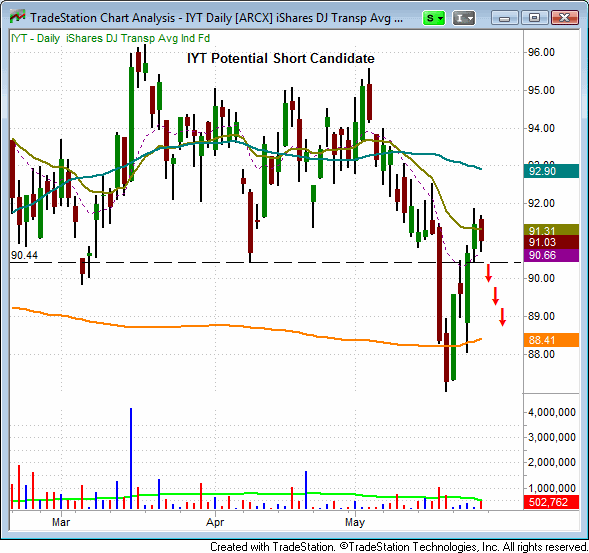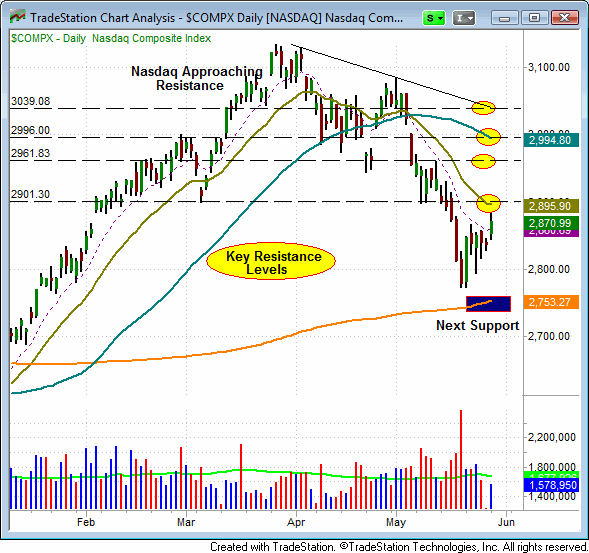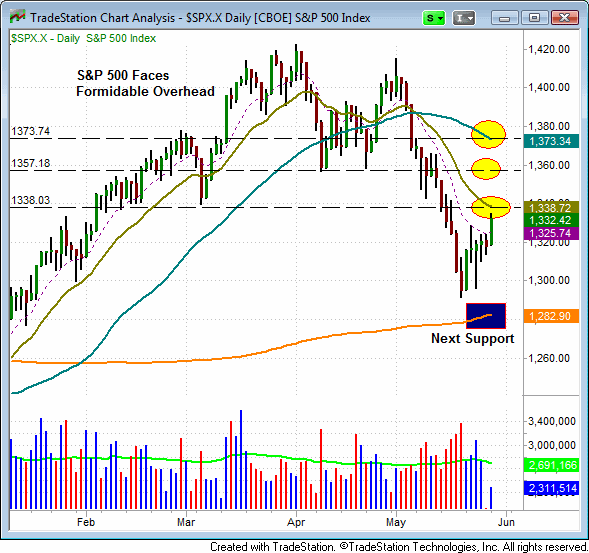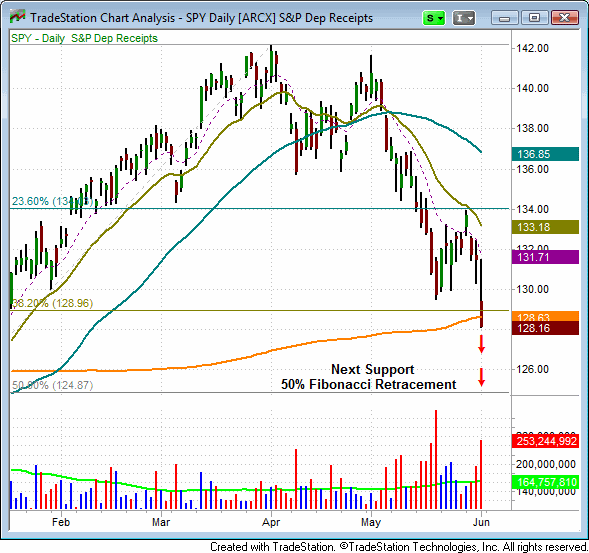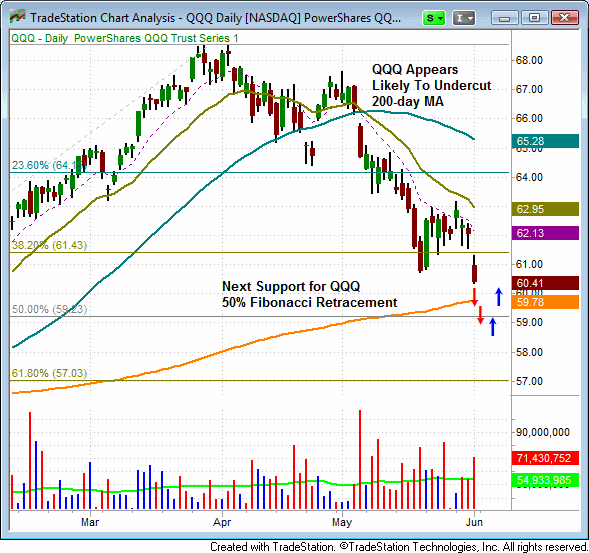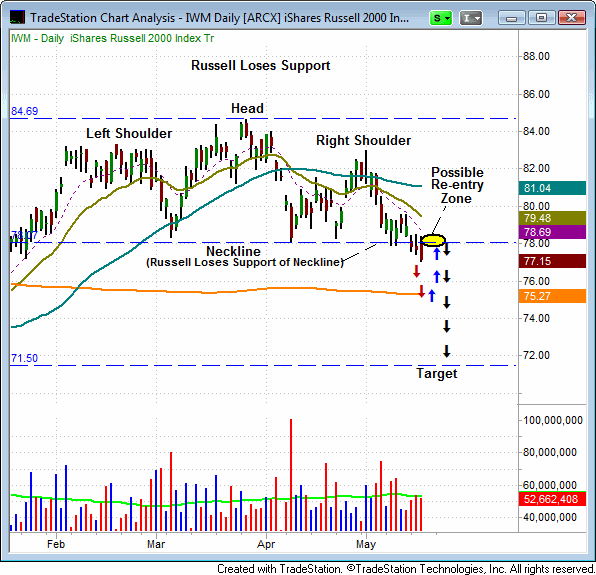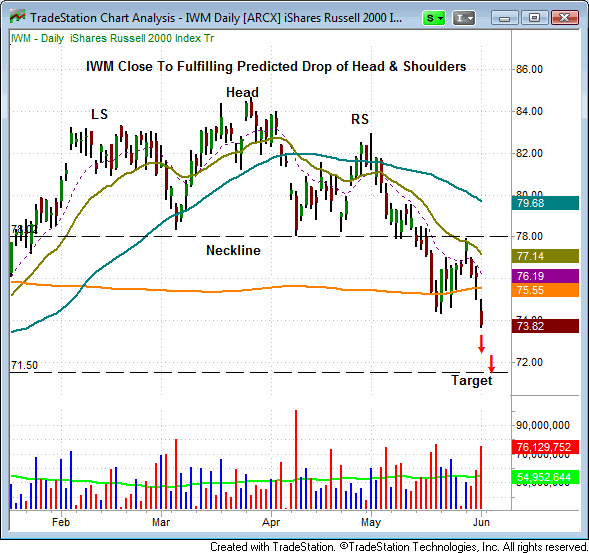Discussion on swing trading strategy, market psychology, and principles
Recently, forex trader Jared Mast published titled The Trading Elite: Discussions With Top Financial Traders. It's a book that features educational interviews with well-known traders of various markets. I was honored to be one of those traders that Jared interviewed, and he has granted permission for me to republish that section of his book. Following is a transcript of his interview with me, only slightly edited to reflect a few minor changes in strategy since the interview was conducted. Hope you enjoy and learn a few helpful things.
Deron Wagner specializes in ETFs (and stocks). I was lucky enough to chat with him over the phone while he was in his Hong Kong office. Deron shares some great information on trading and why you need to be in the Asian markets.
Every trader’s background is a little different, what’s yours?
I don’t come from a Wall Street background. I was doing business to business sales, carwash, cleaning chemicals, nothing to do with financial markets. The way I got started it was back in the .com era and in the late 90’s I remember one day seeing in the newspaper for excite.com, which was an early search engine, and their stock price went from, I think it was $6 a share to around $50 a share in a matter of days back in the 90’s.
There were a lot of moves like that. I remember, not knowing anything about stock market but I could do the math. And I thought, well I got to figure out how that works. So, that really intrigued me and started studying it more. That’s how I became interested just kind of by accident actually.
So how did you learn to actually trade successfully?
Initially, the school of hard knocks is how I learned. I lost a lot of money in the beginning and I think that’s one of the best teachers because when you lose money you remember pretty well.
I was self-taught in the beginning. I definitely learned the hard way what worked and what didn’t worked. But then after a while I did start to follow some of the chat rooms that were popular in the day for day trading and couple early educational services.
But I’d say the bulk of what I did I just learned through trial and error. After about a year or two, I eventually got to where I was not losing money.
Another year after that, I was making a profit and then I just kept refining the system over and over again until it was consistent.
What made you keep going when you suffered those initial losses?
I enjoyed the challenge first of all. I’m not only a trader, but I’m also an entrepreneur. I have different businesses that I started over the years and I’ve always enjoyed the challenge of doing that and trading was definitely challenging.
But I also always thought I was right on the verge of getting it, and told myself “if I just can just figure this out, just figure that out, I’ll make it” and eventually I did. But I think that it definitely requires a lot of persistence. It’s not something that one can expect to learn in the first try most of the time.
What type of trader are you: day trader, swing trader? Has your trading evolved overtime?
I started in stocks and then got in ETFs. I’ve been tempted on occasion to try Forex and Options and Futures and so forth.
But what I learned is that when you try to dilute your efforts too much in to learning too many different vehicles, the performance suffers in what you know well. I try to really just stick to what I know.
But my trading has evolved. When I started out, I was a day trader. I did that for a couple of years. Although I was okay at it, it really just burned me out mentally.
Staring at the screen all day, getting in and out, it just wasn’t my style. Eventually, that turned into more of a swing trading style playing momentum base moves that I hold for several days maybe a week or two.
Now, I actually do more position trades, still technical based, but holding longer, several weeks to several months. I find that it has evolved over the years too, longer and longer timeframe but based on the same principles.
And what are those principles?
Most of what we do is technical. I’d say about 95% of our decisions are technical. But often with some of the ETFs such as commodity ETFs as an example, oil or something like that, we are aware of fundamentals such as reports that are out and so forth that could affect the move.
We try to base our decisions on technical analysis because most of the time in the news you need to know is already priced into the chart pattern anyway.
Fundamentals just play a very small role. As far as the types of setups that we do, it depends really on the market conditions. In the trending market, we do a lot of breakouts, ETFs and stocks that are consolidating near the highest for maybe two to five week range and then we buy the breakout.
It’s pretty basic. We also like to buy pullbacks when something pulls back, like when the strongest trending ETF pulls back to the 20 day exponential moving average. If it’s the first touch of that 20 day MA, a day after a strong breakout, that’s often a very ideal entry point. A similar, but opposite, strategy is employed for short selling in downtrending markets.
The market’s dynamics sometimes change what works and what doesn’t. One thing we found lately that’s working is buying failed breakouts.
Basically, something breaks out and a day or two later it fails. It goes back into the range. But if the next day it gaps up, often that gap up will take it back up and the breakout will follow through because all the people that bought the breakout are disappointed and they’re out. Now, there’s less overhead supply. That’s one of the more recent patterns we’ve been having success with.
Really what we do is not rocket science. It’s pretty basic, trend trading, pullback trading, and trend reversals. That’s probably the bulk of it.
Do you ever try and forecast the market?
I do try at times to forecast it. I always regret doing so because I’m usually wrong. Not only that, even if I am right, often it doesn’t mean anything about this ETF or the stock.
Even if I think the market’s going to pull back, often it will pull back. But if you’re in a strong stock or strong ETF that has good relevant strength to the market, often the ETF will just ignore the pullback in the market and continue trending higher.
Normally, it just works out to be a bad idea whenever I try to forecast more than a day or two in advance of what’s going to happen.
Basically we have a plan. For example, if the market goes up this is our tentative plan. If the market goes down, this is our plan. But we try not to predict what it’s going to do, just be prepared for whichever scenario might happen.
What’s your opinion on stop losses? How should traders be using them?
We always have a predetermined stop price at the same time we enter the trade. But after the trade sometimes the stop will change.
For example, if we have a large profit showing, we might raise the stop higher or trail stop higher. We always have a stop predetermined at the time of entry.
Not doing so creates a problem for many people including myself because if the stop’s not set at the time of entry, emotions come into play.
Whereas having that firm stop in place really keeps it mechanical and keeps it mathematical. We know for example that if we make a profit on 60% of our trades and our average winner’s bigger than our average loser by say, two-to-one.
We know that at the end of the year we are profitable. But if we don’t have the firm stops in place, let’s say, our win ratio for a year is only 50% and then our average winner is only as large as our average loser because the losses are too big then that would be a breakeven year.
It’s important for the math to work. In order for that to happen, I think one needs to be really consistent with whatever strategy they use in setting stops.
What other traits do you think that successful traders have? Is it risk management or strategy? What do you think?
One of the things is actually what you mentioned earlier and that is just persistence. I’d say a vast majority of traders, I don’t know the percentage exactly, but I’d say it’s greater than 50% of traders that attempt doing this without any prior experience probably lose most or all of their money within the first six months.
I was one of those as well. I’m not embarrassed to admit that. But then the person without persistence just gives up and says, well I don’t know what I’m doing, that’s too difficult, I don’t want to lose money and so forth.
But to people that learn from their mistakes and come back and do it again and maybe lose their money again one more time or two more times, those are the people that generally go on to be the successful traders over the long run. Also following a proven trading strategy that works is very useful at increasing the odds of success, particularly for new traders.
Anyone who’s been trading for a long time and says they’ve never lost money is either lying or I’d say they happened to maybe start right in the beginning of the bull market and haven’t experienced the both directions of the market.
Another one is not being afraid of risk. At the same time you have to respect risk by having stops. But if you’re the kind of person that as soon as the stock moves a few cents against you, you get scared and get out, you’re never going to make money. You have to have a healthy level of risk indulgence but at the same time controlling it. It’s got to be a fine line, a balance somewhere in the middle.
How do you recommend traders with smaller accounts get started?
I’d say that, first of all, what I don’t want to recommend is paper trading. A lot of people say I’m going to paper trade and see if I can get a strategy that works.
In my opinion, paper trading is completely useless because when there’s not-real money involved, your emotions are taken out of it and people react completely different when money’s on the line. That’s what I recommend not doing is paper trading.
As far as what I would recommend doing, I’d say, using ones earned money but maybe a small amount, let’s say someone has $20,000 saved, take 3,000 to 5,000 of it, a very small amount, open an account with a very inexpensive brokerage firm where the trades are only going to cost you a dollar or so, and then just learn a strategy.
The goal in the beginning should not be to make money or to make a profit. The goal is to be just not to lose money and make sure that you can respect risks and honor stops.
Once you’ve proven to yourself that you can do that, and then you can increase your risk. But I think too many people come in to this business with high expectations of making money so they take a lot of risk and that’s how they get blown up right away.
I think it’s really important in the beginning. Don’t worry about making money. Just get a strategy that works.
Any specific trades stick out in your career?
I try not to get excited when I have a good trade and I try not to get disappointed when I have a losing trade. I keep it very mechanical. It’s even difficult for me to think of a trade that comes to mind. Sure, I’ve had many, many winning trades. But, to say that one stands out as a best trade is difficult for me.
I think that that’s the way that all traders should strive to be is not even look at it as, “look at this I made big money” or “this is really bad I lost a lot of money in this one.”
It should be definitely emotionless like a robot. Now of course, we’re humans so that’s not really possible. But that should be the goal, to be like a robot.
I know for example that overtime every ten trades I take on average, I’m going to lose on 4 or 5 of them, make money in 5 or 6 of them and my average winner is going to be twice as big as my average loser.
Therefore, at the end of the day or at the end of the year, it’s profitable. But how I make that money and which trade, it doesn’t really, it’s completely irrelevant to me which trade makes the money and which one doesn’t. It’s a numbers game.
I take it and you see a lot of opportunity in the foreign markets as opposed to the US markets right now?
That’s exactly right. I do think that, over the long term, the US markets are rather saturated in the opportunities for growth or going to be much more limited than in the east, in particular Asia.
A good example is the Hang Seng market of Hong Kong. It just had its highest volume day ever about a week ago (when this interview was conducted), whereas the US is still well off its highest volume days of years ago.
There’s huge money flowing into the Asian markets and we’re looking to take what we do and share that with the investors and traders in Asia.
I’d definitely recommend getting involved in the Asian markets.


